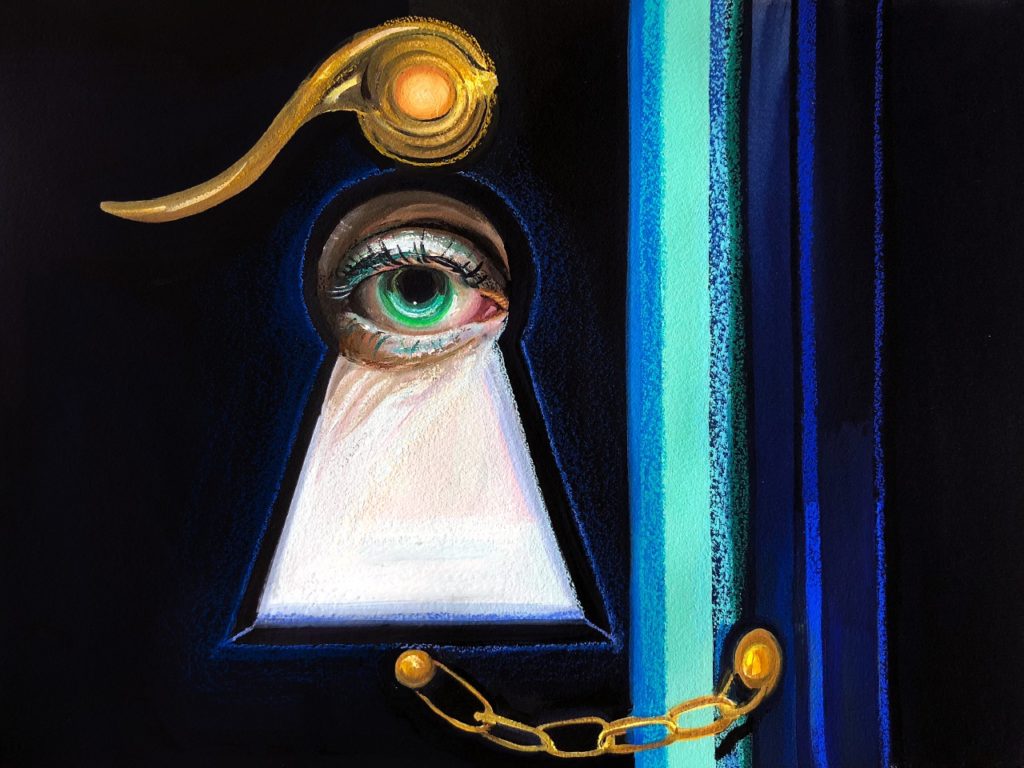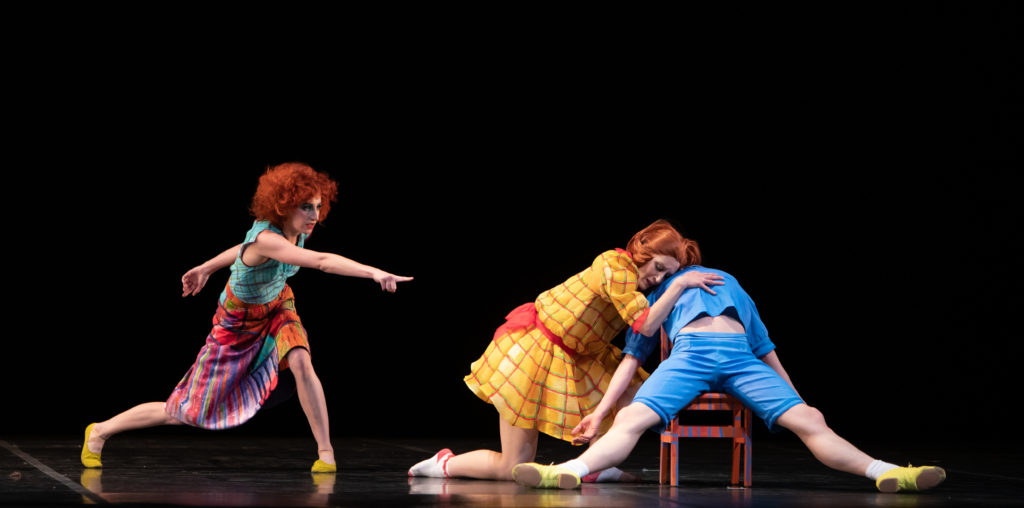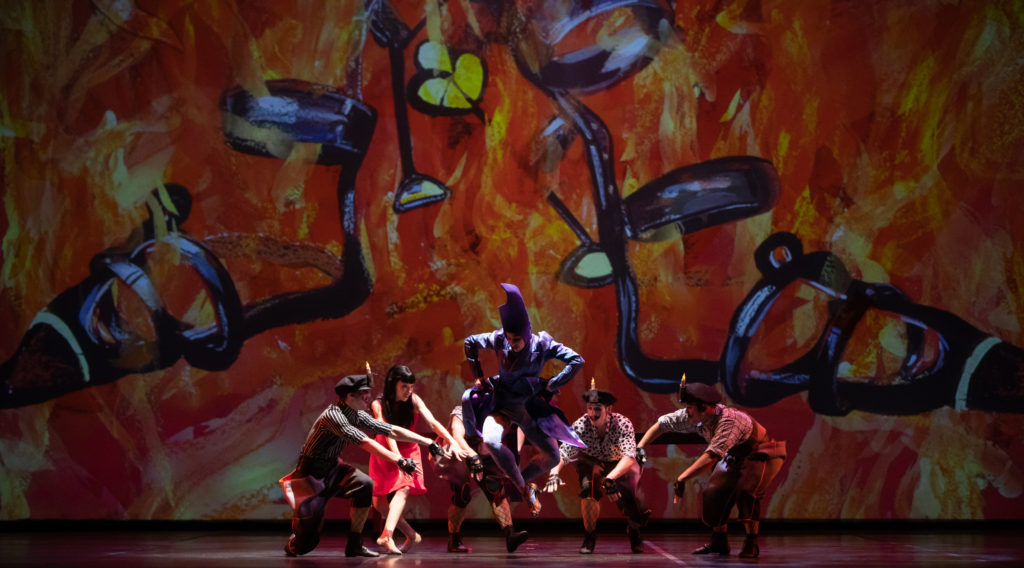A Twist on Storybook Classics—The World Premiere of GRIMM TALES Ballet
By archaicpress@gmail.com / on April 1st, 2019 / in ARCHAIC PRESS, FeaturedRyan Wallace
In the world premiere of Ballet Austin’s GRIMM TALES, artistic director Stephen Mills transforms twisted versions of some well-known classics into something truly unique. Blending classical and contemporary ballet, Mills’ choreography lends itself to the challenging and at-times dark subject matter. And through three brief tales, Ballet Austin’s company dancers are able to not only bring to life grim stories, but also individually shine—displaying a wide variety of talents and technique.

Artwork by Natalie Frank
From misshapen artwork that evokes the style of Picasso to choreography that pushes boundaries, Ballet Austin’s GRIMM TALES is a unique ballet that delivers the unexpected in a format that feels strangely familiar. Based on three famous Grimm versions of The Frog King, Snow White, and The Juniper Tree, the ballet reimagines classic tales through a new lens—where both parts of dualities like vibrancy/darkness and classical/contemporary, share equally important roles on the stage. Artistic director and choreographer for the company, Stephen Mills, challenges the format of classical ballets with this noir interpretation, but still brings the classical and contemporary movement that had audiences applauding for more.
“GRIMM TALES is unlike anything I’ve previously brought to the stage, thanks to the larger-than-life nature of the subject matter and the fantastical visual elements on display throughout the production— costumes, wigs, set pieces, animated background projections, and props—all which tie back to Natalie Frank’s extraordinary artwork,” Mills said. “The dancers and I created choreography to complement the eccentric characters and outrageous storylines that comprise GRIMM TALES.”

Photos Taken by Anne Marie Bloodgood
Perhaps the greatest strength of this ballet is its ability to engulf the audience in their own imaginations. Illusion work, passage of time, and complex/dark themes require the audience to suspend their own reality and put themselves into the storybook along with the characters. Though there were fumbles in technical execution along the way, like a misplaced backdrop and a few quick changes that didn’t go off flawlessly in the debut performance, the show overall was able to evoke a strong sense of connection between the dancers, the stories, and the members of the audience who followed every step along the way.
“These stories are still here because they are relevant. If art is going to have any importance in our lives, then it has to speak to the contemporary nature of the very turbulent and violent world in which we live right now” Mills said. “The stories weren’t meant to be entertaining; these stories were written as warnings. My hope is that when people leave the theater they have something to reflect back on. I think that the greatest value of art is the conversation that happens after it has been experienced.”
While classical ballets feature ballerinas as the main protagonists of fairy tales, in GRIMM TALES it was the male members of the Ballet Austin company that really shined. This company is particularly interesting to watch because although they do come together at times, it’s clear that all of the dancers have different expertise and high levels of technical ability. Perhaps it was the overall theme of the stories, or perhaps the male members’ penchant for contemporary ballet, but standouts like the Frog King (played by Oliver Greene-Cramer) drove the stories and the pace of the show. One particular nod should be made to another male standout, Max Azaro who played the Boar in Snow White. In a stunning, and cumbersome, costume that would have hindered any dancer of less skill, Azaro told a story and provided a burst of energy that continued throughout the show.

Photos Taken by Anne Marie Bloodgood
The inaugural work, which debuted its world premiere last Friday Mar. 29, is the first commission of its kind, made possible by a generous $3 million gift from the Butler New Choreography Endowment. Long-time supporters of Ballet Austin, Sarah and Dr. Ernest Butler created the endowment to help fund the company in perpetuity—giving rise to new and innovative choreography, along with opportunities for new generations of dancers. GRIMM TALES not only represents how these old lessons still apply to the stories we see today, but also the start of a new chapter for the company.
“The Butlers believe in the importance of bringing new, groundbreaking dance works to the stage,” Mills says. “And we hope GRIMM TALES redefines what it means to experience ballet, presenting age-old, familiar stories in powerful and relevant new ways.”
